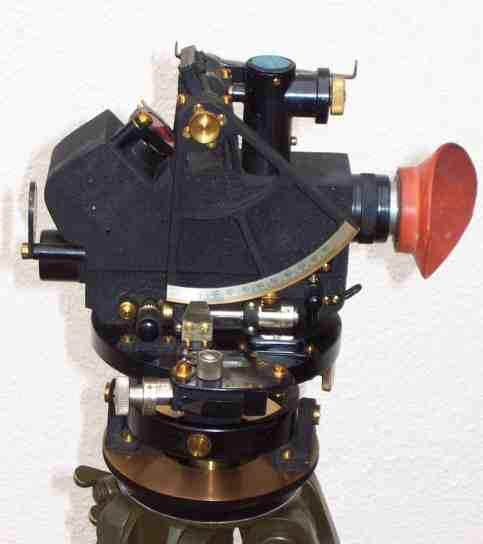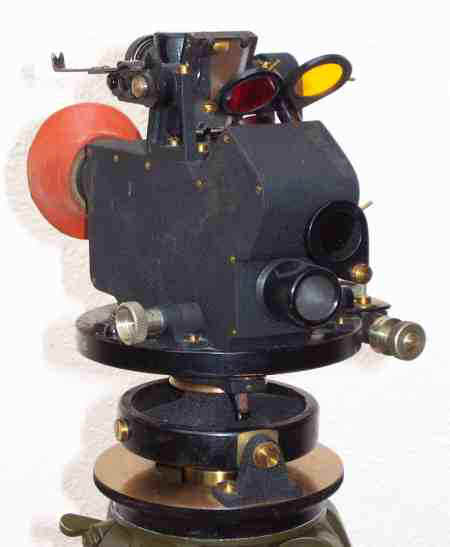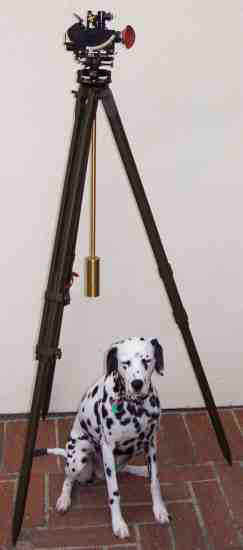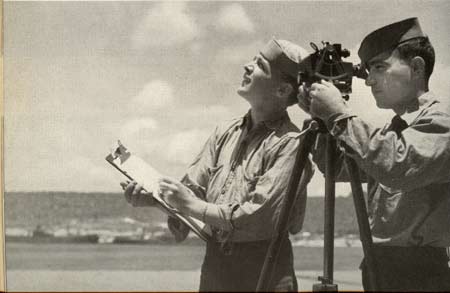Photos of a K & E Marine Theodolite.
Marine theodolites were used in the navel services of the United States and the United Kingdom around the time of the second world war.
The photo below left is a side view showing the vertical arc. It is not a circle like a standard theodolite as this theodolite uses an index mirror like a sextant. The theodolite is installed on a gimbal which put on the tripod for use. The theodolite is kept upright by attaching a pendulum (see photo below of complete theodolite) to the underside of the gimbals. This allows the instrument to remain level on a pitching deck. Directly below the eyepiece the horizon switch is visible allowing use of the natural horizon or the bubble horizon.
In the front view, below right, you can see the two colored filters used to improve the contrast between the balloon and the sky. The single dark gray filter near the bottom of the theodolite is used when sighting the horizon when the sun is located in the field of view. This machine would appear to be useful as a navigation device as well. It could be used for sun or star sites. However a sun filter is not fitted on the index mirror path.
 |
 |
| The Photo on the right shows the complete
theodolite installed on a tripod, note the pendulum hanging below. The "mil
spec." Dalmatian, code named "Peek-a-boo" is an optional item and not
required for operation of the theodolite. (in fact she can be an impediment) The threads
of the gimbal are slightly larger than the standard theodolite tripod thread. This
instrument has micrometer drums, which are both read from the front side, the elevation
knob is on the back side of the instrument. Photo from USS Bunker Hill Nov 43'-44' |
 |

